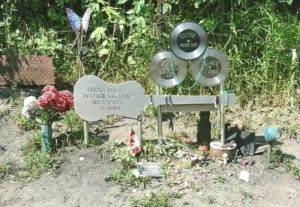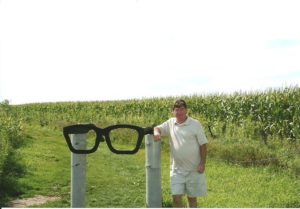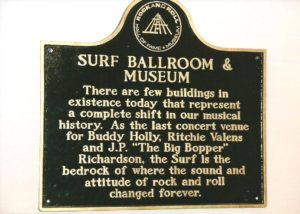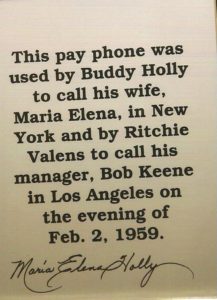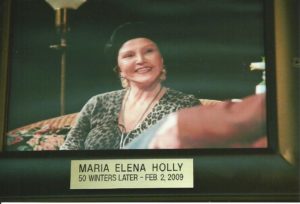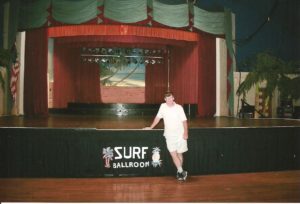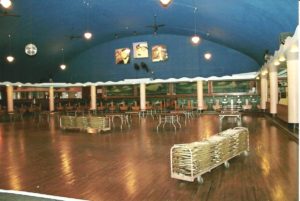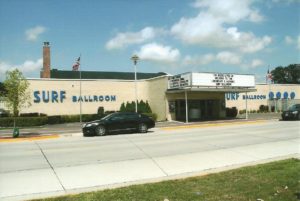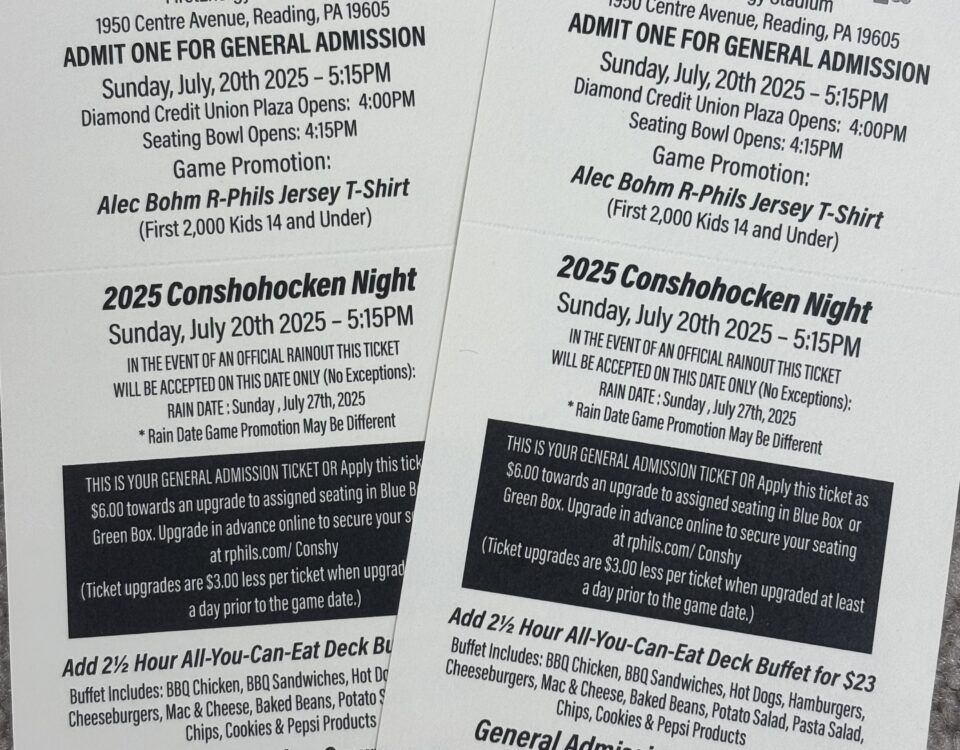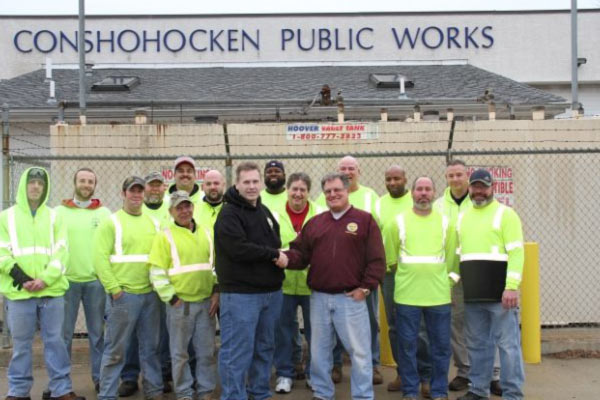
Thank you Harvey Buek, Good Luck Ray Sokolowski – Public Works
January 21, 2017
Slideshow – The History of Conshohocken on February 21st
February 4, 2017Clearlake, Iowa – Truly the Buddy Holly Story By Jack Coll
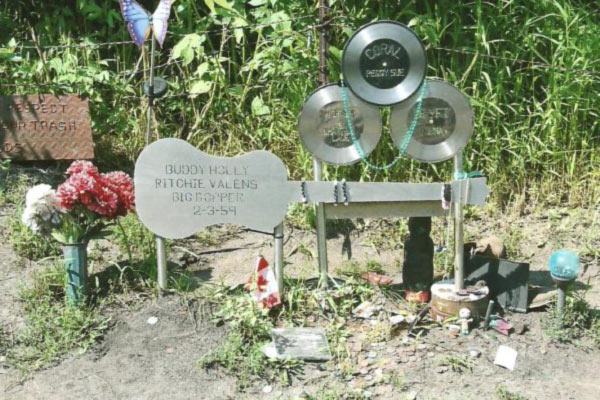
Clearlake, Iowa—They have a lake called Clearlake!!
Truly The Buddy Holly Story
The Surf Ballroom and the Crash Site
By Jack Coll
In August 2016 Donna and I took a road trip that led us through several states on our way to South Dakota to view Mount Rushmore and the Crazy Horse monuments. Along the way we stopped at Kent State University to pay respects to the four Kent State Students that were shot and killed on May 4, 1970. We also stopped in Cleveland, Ohio to visit the Christmas Story House, and once in Iowa we visited the Field of Dreams where I ran the bases and stood in the corn field looking for ghost.
Among the dozen or so stops that we made during the two week getaway was the most anticipated stop on the road trip for me, Clearlake Iowa, home of a lake called Clearlake, and the Surf Ballroom where Buddy Holly, Richie Valens and J.P. “Big Bopper” played their final concert.
As I recall we arrived in Clearlake sometime mid-day or early afternoon. They had this beautiful lake with a great lakefront beach and boating ramps area. Donna and I decided to stretch our legs following the morning drive and sat on a bench overlooking the lake like all the other old people were doing, (Yes there was a lot of young people as well).
That’s when I asked one of the stupidest questions I’ve ever asked during our 42 years of marriage. It was truly a Bill Engval moment. I said to her “Geez this is really a beautiful lake, I wonder what the name of it is?” As soon as the words came out of my mouth it felt wrong but Donna wasted no time in belting out “It’s CLEARLAKE” not wanting to give me time to catch myself, “HERE’S YOUR SIGN.”
It turned out that we were a few blocks from the Surf Ballroom, the venue made famous by the concert held on February 2, 1959 that included Buddy Holly, Richie Valens and J.P. Richardson “Big Bopper.” (J. P. stood for Jiles Perry, and his last name being Richardson)
We drove over to the ballroom, parked out front and walked in. It was like we were transformed back in time, back into the 1950’s. The ballroom was originally built in 1933, but burned to the ground in the mid 1940’s. The current ballroom was built and opened in 1948 having been built across the street from where the original ballroom was located.
The place was in great shape both inside and out and still host concerts, dance parties and private parties year-round. The ballroom has a seating capacity of 2,100 and a 6,300-square-foot dance floor. Once inside I discovered I could spend hours looking at the hundreds if not thousands of pictures on the wall of performers who have played the venue along with dozens of signed guitars. There is a souvenir shop selling mostly t-shirts, concert posters and other music memorabilia.
The three most intriguing parts of the Surf Ballroom to me was the stage, the dressing room, I don’t know if they called it a green room back then and the telephone booth where Buddy Holly called his wife Maria Elena after the show and Richie Valens called his manager on the phone following the show.
Walking out onto the stage was some-what magical to me, although the stage was expanded over the years the outline of the original stage was still very clear, it was a much smaller stage when the 1959 Winterland concert took place. The Buddy Holly movie took some artistic freedom when it came to the telephone at the Surf Ballroom. The movie shows Buddy Holly on the phone talking to his wife Maria Elena and Richie Valens talking to his brother Bobby just off to the side of the stage before going on to perform. In reality they both used a phone booth in the lobby of the ballroom following the show.
Perhaps one of the greatest aspects of the Surf Ballroom is the changing room with a door leading to the stage. The changing room has thousands of autographs of performers who have played the venue over the years. John Sebastian of the Loving Spoonful, Gary Lewis of the Playboys, the words to the song “American Pie” singed by Don McLean, Darius Rucker of Hootie and the Blowfish and so-on, just thousands of signatures.
But a few of the more notable signatures included a note signed by “The Valens Family,” and Maria Elena Holly, Buddy’s wife who attended a 50-year memorial concert back in 2009. One other signature really caught my attention, that of Peggy Sue Gerron.
Everyone knew that when Richie Valens recorded the song “Donna” it was for his high school sweetheart Donna Ludwig. (Now known as Donna Fox) Everyone assumed that when Buddy Holly released the song “Peggy Sue” that he was singing about his girlfriend but that was untrue. Holly wrote the song as “Cindy Lou” with no one in mind.
The Crickets drummer Jerry Allison however was dating a girl named Peggy Sue Gerron and asked Holly as a favor if he would change the name and lyrics of the “Cindy Lou” song to “Peggy Sue.” Allison asked for the favor figuring it would get him a ton of “Brownie Points.” Holly changed the words but was never involved with Peggy Sue, the band members just figured that no-one outside of Lubbock, Texas would ever hear the song anyway.
Holly wrote a sequel to “Peggy Sue” called “Peggy Sue Got Married.” The song was released on a compilation album after he died. The song inspired the 1986 movie “Peggy Sue Got Married” starring Kathleen Turner and Nicolas Cage. The song “Peggy Sue” was a big hit for Holly and although the movie “Peggy Sue Got Married” was a success at the box office the song never was.
One of the signatures on the dressing room wall is that of “Peggy Sue Gerron,” now I’m not sure if that is the Peggy Sue who the song was about or not but I snapped a picture of the signature.
The telephone booth in the lobby at the ballroom has a lock on it and is undoubtedly out of service now, it’s one of the old fashion phones where you would drop a dime in it and spin the dial to reach your party. A framed card in the phone booth reads “This pay phone was used by Buddy Holly to call his wife, Maria Elena in New York and by Richie Valens to call his manager Bob Keene in Los Angeles on the evening of Feb, 1959. The card has the signature of Maria Elena Holly, apparently she signed the card when she returned to the ballroom on February 2, 2009, fifty years after the concert and crash.
I’m thinking we spent two hours at the ballroom or more. The ballroom is open to the public even though the offices were conducting business and selling tickets at the time to the next concert being held there which was the “Happy Together Tour” starring Flo and Eddie of “The Turtles.” Tables were being set up for another up-coming event and yet the owners simply allow members of the general public just roam the building, it was pretty cool.
From the ballroom it was off to the crash site which was about 15 to 20 minutes from the Surf Ballroom. (45 minutes to an hour and a half Jack and Donna time) We were told the crash site was very easy to get too, follow this road and take a left, follow that road take a right, follow that road until it turns into a dirt road. (That’s where Jack and Donna time kick-in) So about an hour and 20 minutes later we spot the big old pair of Buddy Holly glasses in black wrought iron on a metal pole in this corn field. We were truly in the middle of nowhere, not a car in any direction and we park the van on the side of the road careful not to strike any corn-stalks.
Donna decided to sit this out, she wanted nothing to do with me and a cornfield so off I went. It’s a wide path cut through this cornfield and the crash site is about a third of a mile into the field. When you get to the small memorial it hits you that on a cold winter morning during a time when the corn wasn’t growing that this is the crash site and in my mind I could see the body’s as they laid close to the plane. Buddy Holly had a light colored overcoat lying close to the plane and Richie Valens had on a dark, maybe black overcoat on lying about ten feet from Buddy.
The memorial is a simple guitar and three records made out of steel, the guitar inscribed with the three names and the date, “2-3-59.” Another small marker has the name of the pilot of the Beechcraft Bonanza aircraft Roger Peterson. Visitors continue to leave small tokens such as coins commemorating the now non famous coin-flip that Waylon Jennings lost allowing Big Bopper to take his seat. CD’s, records, jewelry, flowers and other items are visible around the memorial. After spending a little time alone at the site and dropping to one knee to say a prayer a family of four was approaching the site, a husband, wife and two children, It’s seemed funny, the parent’s couldn’t have been any older than say 30-35 years old and yet there they were.
As they arrived at the site in the middle of the cornfield we exchange “Hello’s,” I didn’t have any change in my pockets so I bent down and picked a quarter up off the ground and flipped it high into the air. I turned and walked away before it hit the dirt, I’ll bet they are still wondering what the hell that was all about.
It didn’t take us long to find our way back to the blacktop, as the dust kicked up behind us I started thinking that our trip was turning into a “Dead Tour.” After all we had been on the road just five days and we had stopped at Kent State University to pay respects, visited the site where eleven concert attendees had be crushed or stomped to death in Cincinnati, Ohio, visited a ball field where ghosts appeared out of the cornfield and now the whole Clearlake visit.
As we pulled out of town I put a smile on my face in an effort to forget all about the “Dead Tour” after all we were headed to see a national landmark, Mt. Rushmore, a mountain with the faces of four dead presidents carved in the side of the mountain, that thought made me feel a whole lot happier.
On this February 2, I’ll pause to think about what might have been, I’ll think about their families and loved ones they left behind, and I always think about Maria Elena Holly, who lost her baby after hearing about the plane crash that took Buddy’s life.
And of course I’ll listen to whatever radio station I have on and I’m sure to hear Don McLean sing, “A Long, long time ago, I can still remember when the music used to make me smile.”
Having visited the Surf Ballroom and the crash site was like a religious experience for me, they were good moments for me, and I felt blessed as I pulled out of Clearlake, having learned that they have a lake actually called “Clearlake.”
Here’s to you guys that died in that cornfield on that cold February night, thanks for the music that played such an important role in the early days of Rock and Roll.
ROCK AND ROLL WILL NEVER DIE!
About the Photographs below:
The photographs below represent a few of the dozens of pictures I took on our visit to the Surf Ballroom and crash site. Pictures of the outside of the building and of the actual ballroom along with me standing in front of the NOW extended stage. Maria Elena Holly as she looked when she returned for a 50 year Winterland concert celebration of her husband’s death along with a photo of the phone booth that has sat untouched for nearly a half a century. Photographs of the dressing room that contains thousands of autographs singed by artists and performers from over the years including Maria Elena Holly, Peggy Sue Gerron, Don McLean, and the Valens family.
The faded dark photograph is of Buddy Holly performing. There are only seven known photographs taken from the final concert on the night of February 2, 1959. One of the concert goers, a 15 year old girl had a camera and snapped seven photographs during the evening, they all hang at the ballroom, their dark and a little fuzzy but each photograph takes you back to that night.
And finally the crash site, you can see me standing in front of the corn field with a replica of Buddy’s glasses marking the spot of the path that leads you to the crash site, and when I say this is out in the middle of nowhere I mean the middle of nowhere. A small memorial is a permanent fixture about a third of a mile into the farmer’s corn field where visitors have left coins, flowers, photographs and records.
Jack Coll also wrote Clear Lake Iowa – originally posted in 2014 Check it out!

